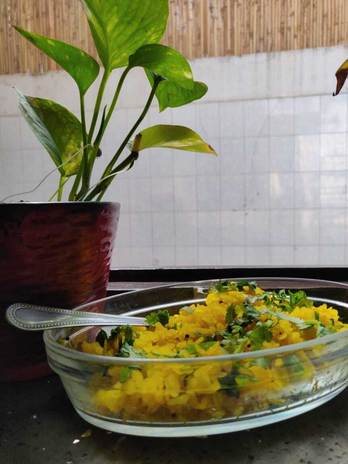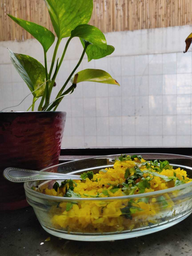Be it a foggy winter morning on a Sunday with the entire household sleeping in, a rushed one the next day, or even a trip to a hill station far away from home, poha is one breakfast snack I, along with countless other Indian families can always rely on. While it’s often referred to as breakfast, its simplicity makes it a popular snack to satiate your hunger whenever you feel those ravenous pangs.
What exactly is poha? I myself wondered for the longest time as a kid. It seemed to me as this special dish my mom made which was super light and fun to eat no matter what time of the day it was. As I grew up, I learned that it’s actually flattened rice, and so much healthier than your regular rice. Wow, I thought. It’s like I’d discovered a needle in a haystack with the needle being something healthy; and the haystack being everything I love — unhealthy food!
Some people label poha as certain towns’ specialties in India. For me, it’s present in the very essence of north-central India but never limited to it. It changes its form as it travels from a small town in Punjab to the busiest college joint in Pune, with improvised recipes that somehow remind you of home.
The best part about it is the simplicity with which it’s made. I have to confess though, I might know the basic recipe but I’ve never tried making it. My brother, on the other hand, who’s younger than me makes the best poha ever. So here are the steps for you to try this evergreen recipe that most of us swear by:
You’ll need some vegetable oil, mustard seeds, green chili, curry leaves, potatoes, and of course, a packet of poha.
You’ll start by heating the oil in a pan, to which you add the mustard seeds, chopped green chili (if you want), and the curry leaves. If they make a great crackling sound, then you’re on the right track!
Side task: Meanwhile, take 2 cups of the dry poha or flattened rice, soak it a little and throw the water away. Also, set aside some potatoes to boil with some salt as a scrumptious addition to your recipe.
Next, we add the spices. Don’t worry, they aren’t all too spicy. Sprinkle some turmeric powder for the vibrant yellow color; some salt depending on your taste – I usually go with one teaspoon for two people, and finally, some red chili powder if you wish.
Take your boiled potatoes, chop them finely, add them to the mix and stir well. Once that’s done, we add our main ingredient — the poha itself. Toss it in, squeeze some lemon juice on top and mix it well.
Garnish with some coriander leaves, as is done for almost everything in my household. And voila! You’re done. You can serve it with roasted peanuts or even ‘namkeen sev,’ which is a great flavor and crunchy texture to add to your snacking experience.

Indians often refer to something which tastes special when made by someone as ‘haathon ka swaad’ or the taste being in the creator’s hands. Try it out, and you might find some special magic in your hands as well!



